The Pilot Assist function gives more comfortable driving and a more relaxed driving experience during, for example, long journeys on motorways in even traffic flows.
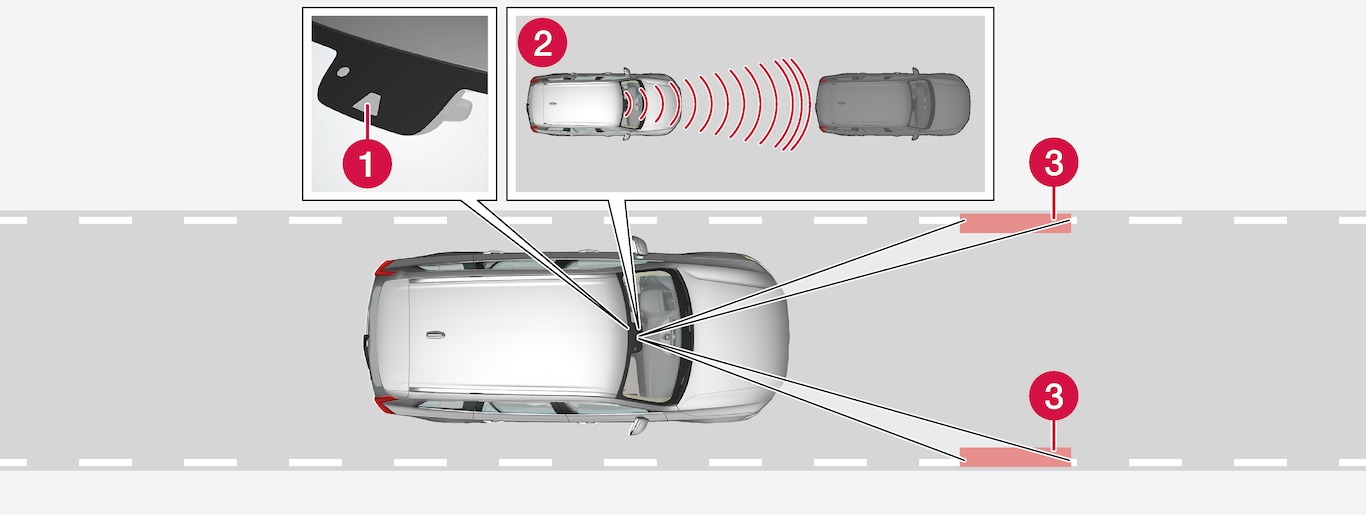
 Camera and radar unit
Camera and radar unit Distance readers
Distance readers Readers, side markings
Readers, side markings
The driver selects the desired speed and a time interval to the vehicle ahead. Pilot Assist scans the distance to the vehicle ahead and the lane's side markings on the road surface using the camera and radar unit. The preset time interval is maintained with automatic speed adjustment whilst the steering assistance helps to position the car in the lane.
Pilot Assist steering assistance takes into account the speed of the preceding car and the lane markings. The driver can at any time ignore the Pilot Assist steering recommendation and steer in another direction, e.g. to change lane or avoid an obstruction on the road.
If Pilot Assist cannot interpret the lane unambiguously, e.g. if the camera and radar unit does not see the lane's side markings, Pilot Assist temporarily deactivates steering assistance, but resumes it if the lane can be interpreted again - although the speed and distance control functions remain active.
Note
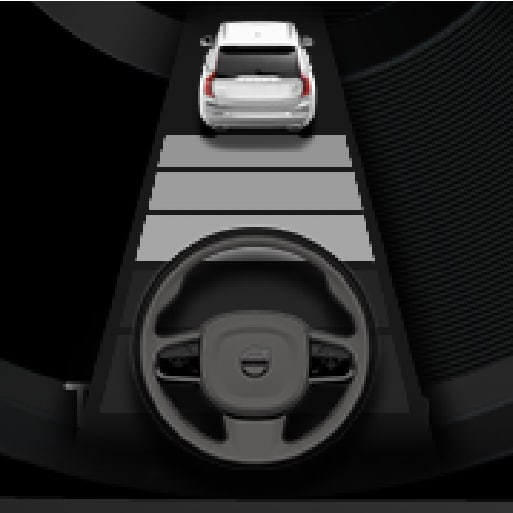
The current status of steering assistance is indicated by the colour of the steering wheel's symbol:
• GREEN steering wheel indicates active steering assistance
• GREY steering wheel (as in illustration) indicates deactivated steering assistance.
Warning
Pilot Assist is an aid which cannot handle all traffic, weather and road conditions.
The driver must always be observant with regard to the prevailing traffic conditions and intervene if Pilot Assist does not provide suitable steering assistance or maintain a suitable speed or suitable time interval.
Read all the sections about this function in the owner's manual in order to learn about its limitations, of which the driver should be aware before the function is used.
Pilot Assist must only be used if there are clear lane lines painted on the road surface on each side of the lane. All other use involves increased risk of contact with surrounding obstacles that are not detected by the function.
The driver always bears responsibility for how the car is controlled as well as for maintaining the correct distance and speed, even when Pilot Assist is being used.
Pilot Assist regulates the speed with acceleration and braking. It is normal for the brakes to emit a low sound when they are being used to adjust the speed.
Pilot Assist attempts to regulate the speed smoothly. In situations that demand sudden braking the driver must brake himself/herself. This applies in case of large speed differences or if the vehicle in front brakes suddenly. Due to the limitations of the camera and radar unit, braking may come unexpectedly or not at all.
Pilot Assist aims to follow the vehicle ahead in the same lane at a time interval set by the driver. If the radar unit cannot see any vehicle in front then the car will instead maintain the speed set and stored by the driver. This also takes place if the speed of the vehicle ahead increases and exceeds the stored speed.
- Pilot Assist can follow another vehicle at speeds from 0 km/h up to 200 km/h (125 mph).
- Pilot Assist can give steering assistance from almost stationary up to 140 km/h (87 mph).
- Pilot Assist can follow another vehicle at speeds from 30 km/h (20 mph) up to 200 km/h (125 mph).
- Pilot Assist can give steering assistance from 30 km/h (20 mph) up to 140 km/h (87 mph).
Warning
Pilot Assist is not a collision avoidance system. The driver must intervene if the system does not detect a vehicle in front.
Pilot Assist does not brake for people, animals, objects, small vehicles (e.g. cycles and motorcycles), low trailers as well as oncoming, slow or stationary vehicles.
Do not use Pilot Assist, for example, in city traffic, at junctions, on slippery surfaces, with a lot of water or slush on the road, in heavy rain/snow, in poor visibility, on winding roads, on slip roads, or with a trailer connected to the car.
Important
Overview
Controls

 Increases stored speed or reactivates Pilot Assist and resumes stored speed and time interval
Increases stored speed or reactivates Pilot Assist and resumes stored speed and time interval Activates/deactivates Pilot Assist
Activates/deactivates Pilot Assist Switches from Pilot Assist to adaptive cruise control
Switches from Pilot Assist to adaptive cruise control Reduces stored speed
Reduces stored speed Increases the distance to vehicles ahead
Increases the distance to vehicles ahead Switches from adaptive cruise control to Pilot Assist
Switches from adaptive cruise control to Pilot Assist Reduces the distance to vehicles ahead
Reduces the distance to vehicles ahead Function symbol
Function symbol Symbols for target vehicle and time interval to vehicles ahead
Symbols for target vehicle and time interval to vehicles ahead Symbol for activated/deactivated steering assistance
Symbol for activated/deactivated steering assistance
Driver display
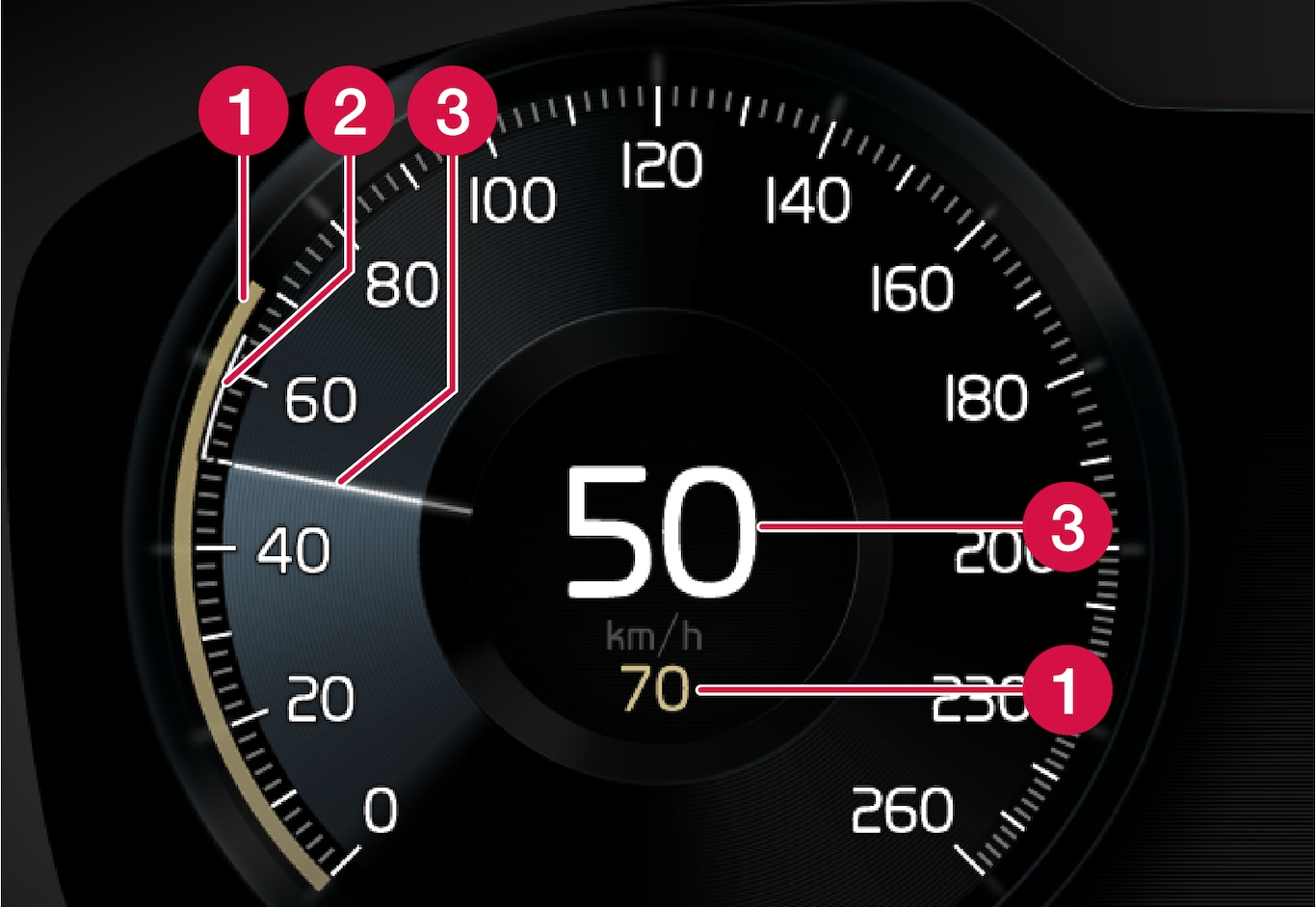
 Stored speed
Stored speed Speed of vehicle ahead.
Speed of vehicle ahead. Current speed of your car.
Current speed of your car.
To see different combinations of symbols depending on traffic situation - see the heading "Symbols and messages for Pilot Assist".
Collision risk warning
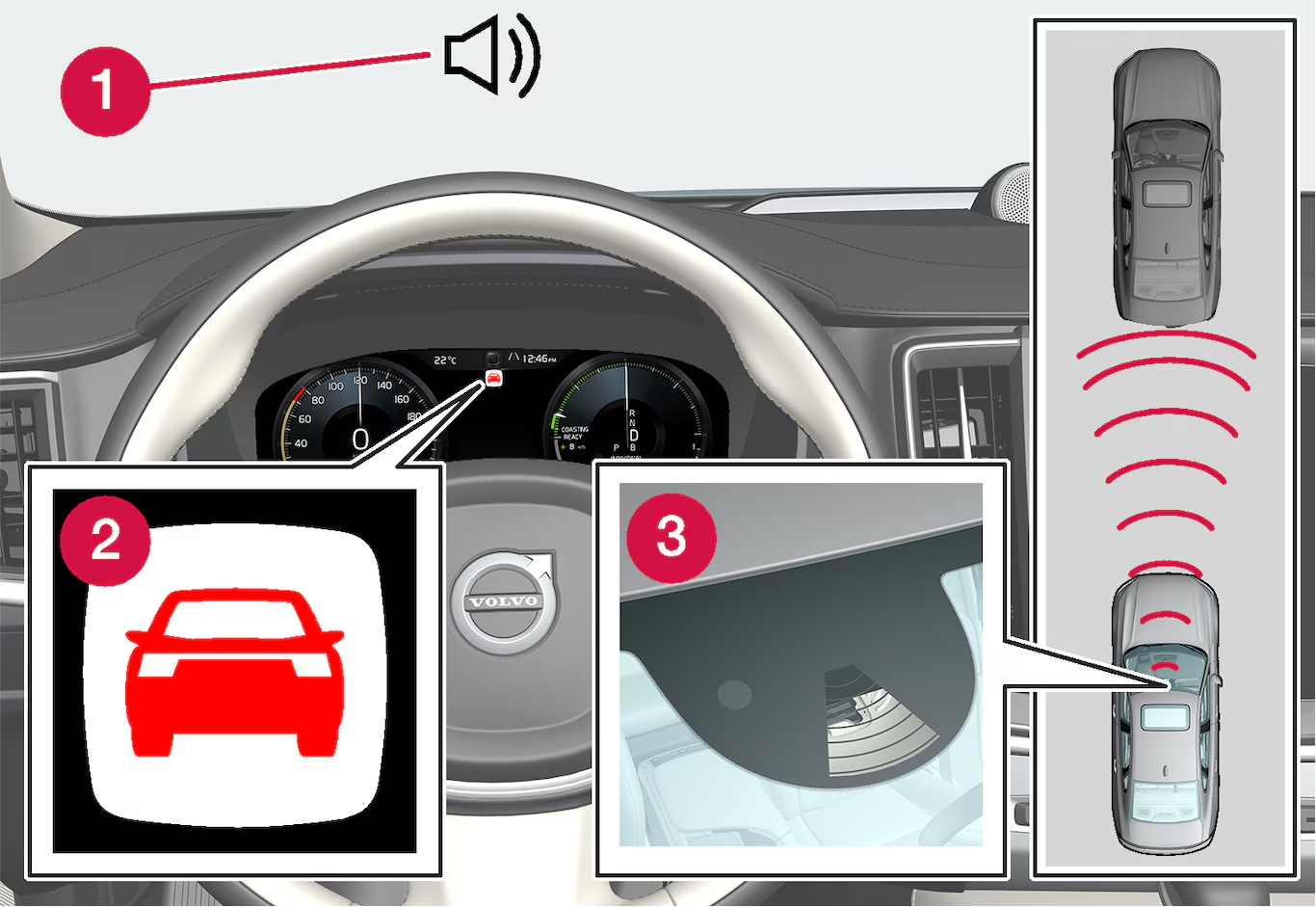
 Acoustic warning signal in the event of a risk of collision
Acoustic warning signal in the event of a risk of collision Warning signal in the event of a risk of collision
Warning signal in the event of a risk of collision Distance measurement with the camera and radar unit
Distance measurement with the camera and radar unit
Pilot Assist uses approx. 40% of the foot brake's capacity. If the car needs to be braked more heavily than Pilot Assist is capable of and the driver does not brake, the warning lamp and acoustic warning are activated to alert the driver that immediate intervention is required.
Warning
Head-up display*
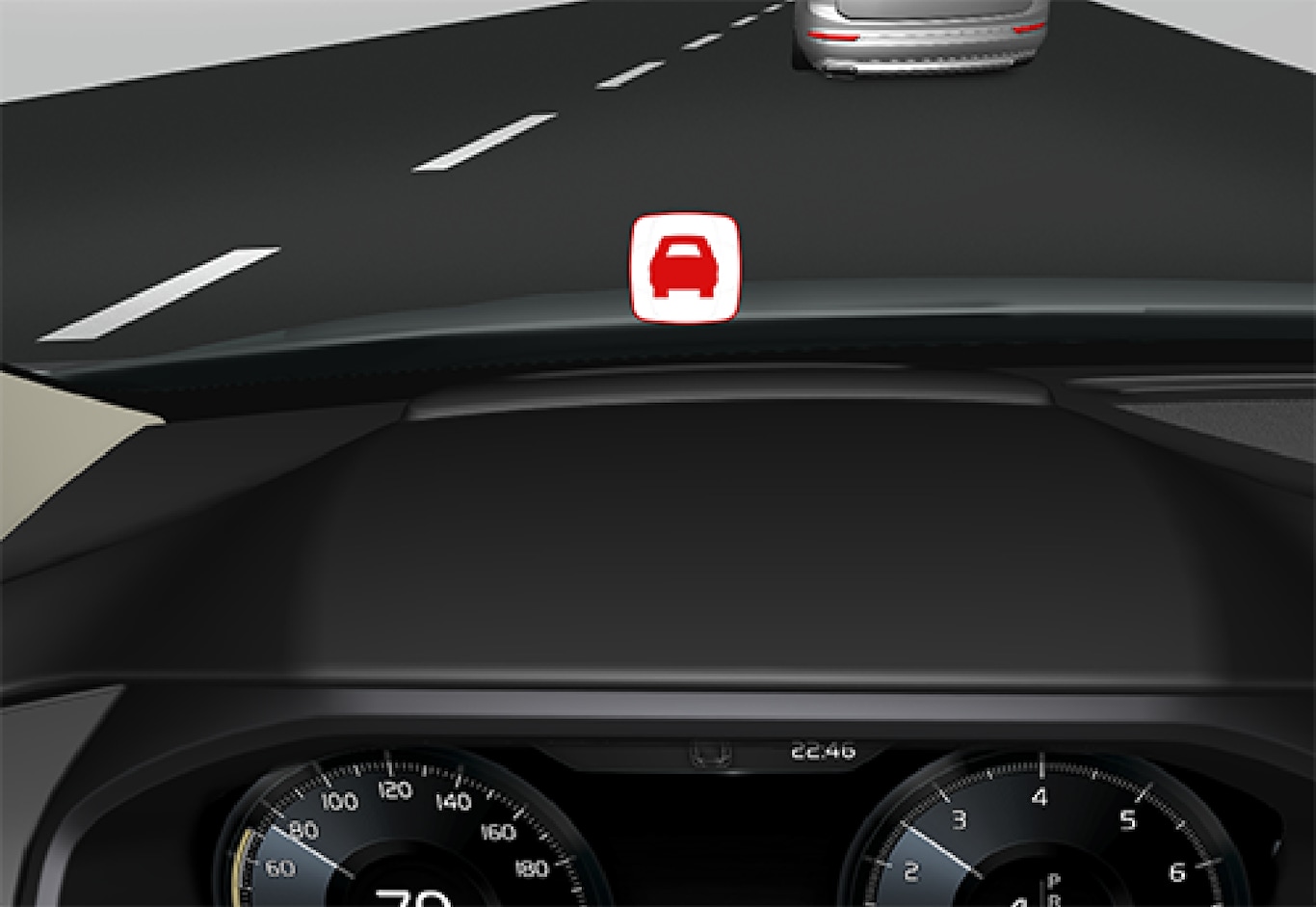
In cars equipped with a head-up display, the warning is shown on the windscreen by a flashing symbol.